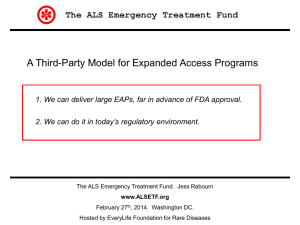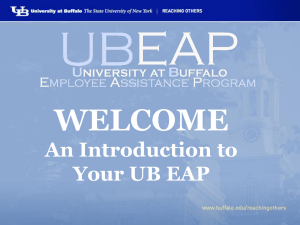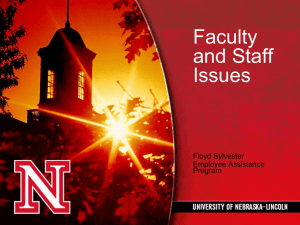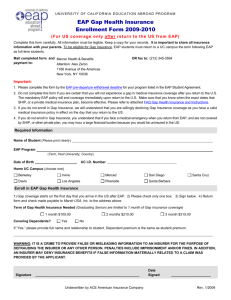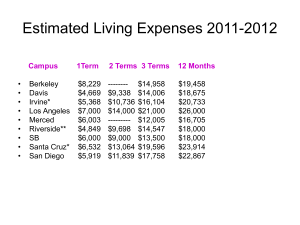April 2003 - LifePlan EAP
advertisement
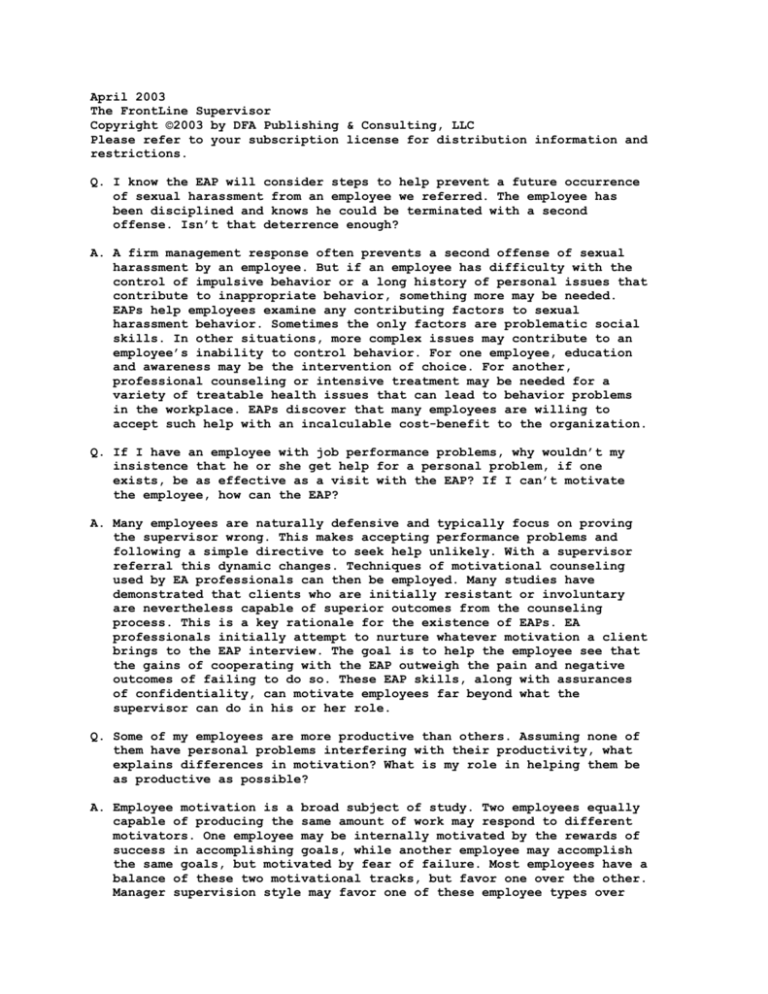
April 2003 The FrontLine Supervisor Copyright ©2003 by DFA Publishing & Consulting, LLC Please refer to your subscription license for distribution information and restrictions. Q. I know the EAP will consider steps to help prevent a future occurrence of sexual harassment from an employee we referred. The employee has been disciplined and knows he could be terminated with a second offense. Isn’t that deterrence enough? A. A firm management response often prevents a second offense of sexual harassment by an employee. But if an employee has difficulty with the control of impulsive behavior or a long history of personal issues that contribute to inappropriate behavior, something more may be needed. EAPs help employees examine any contributing factors to sexual harassment behavior. Sometimes the only factors are problematic social skills. In other situations, more complex issues may contribute to an employee’s inability to control behavior. For one employee, education and awareness may be the intervention of choice. For another, professional counseling or intensive treatment may be needed for a variety of treatable health issues that can lead to behavior problems in the workplace. EAPs discover that many employees are willing to accept such help with an incalculable cost-benefit to the organization. Q. If I have an employee with job performance problems, why wouldn’t my insistence that he or she get help for a personal problem, if one exists, be as effective as a visit with the EAP? If I can’t motivate the employee, how can the EAP? A. Many employees are naturally defensive and typically focus on proving the supervisor wrong. This makes accepting performance problems and following a simple directive to seek help unlikely. With a supervisor referral this dynamic changes. Techniques of motivational counseling used by EA professionals can then be employed. Many studies have demonstrated that clients who are initially resistant or involuntary are nevertheless capable of superior outcomes from the counseling process. This is a key rationale for the existence of EAPs. EA professionals initially attempt to nurture whatever motivation a client brings to the EAP interview. The goal is to help the employee see that the gains of cooperating with the EAP outweigh the pain and negative outcomes of failing to do so. These EAP skills, along with assurances of confidentiality, can motivate employees far beyond what the supervisor can do in his or her role. Q. Some of my employees are more productive than others. Assuming none of them have personal problems interfering with their productivity, what explains differences in motivation? What is my role in helping them be as productive as possible? A. Employee motivation is a broad subject of study. Two employees equally capable of producing the same amount of work may respond to different motivators. One employee may be internally motivated by the rewards of success in accomplishing goals, while another employee may accomplish the same goals, but motivated by fear of failure. Most employees have a balance of these two motivational tracks, but favor one over the other. Manager supervision style may favor one of these employee types over the other, but finding a balance of both is ideal. Examining your management style (whether it is reward and praise oriented, or consequence and discipline oriented) can give clues to improvements in helping motivate your employees. If you struggle with difficulties in changing your style, the EAP may be able to help you discover why and find resources to support your goal of personal balance and change. Q. I need to regain trust for an employee who failed to complete a major project on time causing our company to lose over a million dollars. He was referred to the EAP. Can the EAP advise us on when we can trust the employee again? A. The EAP can work with your employee to resolve personal problems that may have contributed to his or her failure to complete a project on time, but cannot recommend when you should resume a trusting work relationship with him. This takes an administrative decision out of your hands and gives it to the EAP. This would violate the boundaries of the EAP’s role. If your employee signed a release that permits the EAP to inform you of his follow-through with its recommendations, you could choose to use this feedback to trust your employee again. However, this would be exclusively your decision. Likewise, the EAP could not advise you to withhold assignments that are part of his job functions if he did not follow through with its recommendations. Q. What role does the EAP play in increasing employee commitment to our organization? A. Because most employees do not disclose their participation in the EAP, especially to managers, management may not hear how important the EAP is to employees or how moved many are to feel loyalty and commitment to the organization for offering such a service. EA professionals frequently hear how thankful employees are that the company sponsors an employee assistance program. Occasionally some employees with performance problems and personal troubles falsely believe that the organization is “out to get them” until they visit the EAP. This may be the turning point in recognizing their contribution to the difficulties they face with the organization. What often follows is more commitment to the employer, the work unit, and willingness to resolve personal problems. The employee comes to believe that the organization does have a stake in his or her success.


